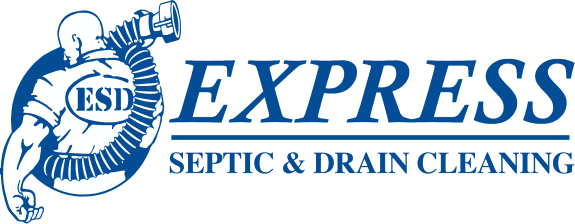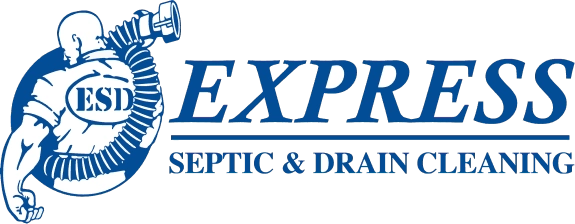Septic lift stations play a crucial role in managing wastewater in areas where the terrain poses challenges for natural gravity-based sewage flow. These systems are essential for maintaining public health and preventing environmental contamination in regions with elevation variations, flat landscapes, or low-lying topographies. Keep reading to learn more about septic lift stations, exploring their components, functioning, maintenance, benefits, and environmental considerations.
Septic Lift Stations
Septic lift stations are specialized systems designed to overcome the limitations of gravity-based wastewater collection systems. These systems are particularly relevant in areas where the terrain makes creating a consistent downward flow of wastewater toward treatment facilities challenging. The primary purpose of a septic lift station is to collect wastewater from lower elevations, pump it uphill to a higher point, and then discharge it into a main sewer line or a treatment facility. This technology finds applications in both urban and rural settings, addressing the needs of various industries and communities.
Components of a Septic Lift Station
Collection Tank
At the core of a septic lift station lies the collection tank strategically positioned in areas with lower elevations. This tank serves as a reservoir for incoming wastewater, allowing it to accumulate before being pumped to a higher elevation for further processing. The collection tank’s design considers factors like volume capacity, durability, and ease of maintenance to ensure efficient functioning.
Pump Chamber
Housed within the pump chamber are the pumps responsible for moving wastewater from the collection tank to the designated discharge point. These pumps are selected based on their capacity and reliability, with submersible pumps being commonly used due to their ability to handle various types of wastewater efficiently. The pump chamber also provides protection and insulation for the pumps, minimizing the risk of mechanical failures.
Float Switches
Float switches are integral to the operation of septic lift stations as they control the activation and deactivation of the pumps. These switches consist of buoyant components that rise and fall with changing water levels within the collection tank. As the water level reaches a predetermined height, the float switch triggers the pumps to start, and when the water level decreases, it signals the pumps to stop. This automation ensures a consistent wastewater flow and prevents overflow or pump dry-running.
Operation of a Septic Lift Station
Initial Wastewater Collection
Unlike traditional gravity-based systems that rely on downward flow, septic lift stations gather wastewater at lower elevations. As wastewater enters the collection tank, the float switches remain in their lower positions, indicating that the pumps are not activated yet. This initial accumulation stage is crucial for efficient pumping and prevents frequent pump cycling.
Activation of Pumps
When the wastewater level in the collection tank reaches a specific height, the float switches trigger the pumps to start. This height is strategically determined to ensure optimal pump operation and prevent excessive energy consumption. As the pumps start, they create the necessary pressure to push wastewater upwards through the discharge pipes.
Pumping Process
The heart of the lift station’s operation lies in the pumping process. The activated pumps use their mechanical power to propel wastewater against gravity, overcoming elevation differences. Submersible pumps, often encased in protective housings, are particularly effective in handling varying wastewater types while maintaining efficiency. This pumping mechanism ensures a steady flow of wastewater to higher elevations, where it can join the main sewage system.
Discharge
Upon reaching the desired higher elevation, the pumped wastewater is discharged into the main sewer line or directed toward a treatment facility. This connection ensures proper processing and treatment of the collected wastewater, contributing to environmental protection and public health. The design of the discharge system accounts for factors like pipe size, flow rates, and elevation changes to facilitate seamless integration with existing infrastructure.
Maintenance and Considerations
Regular Inspections
Regular inspections are essential to ensure the consistent and reliable functioning of septic lift stations. Monitoring the status of float switches, pump chamber components, and overall system performance helps identify potential issues early on, minimizing downtime and preventing costly repairs.
Pump Maintenance
Proper pump maintenance is crucial for extending their lifespan and preventing unexpected failures. Routine cleaning to remove debris and sediment buildup, as well as occasional pump inspections to assess mechanical components, can significantly enhance pump efficiency and reliability.
System Backup and Alarms
Septic lift stations should be equipped with backup systems and alarms to mitigate potential risks associated with pump failures or power outages. Backup pumps or generators ensure continuous operation even in challenging circumstances, and alarms alert operators to high water levels or other anomalies that require immediate attention.
Benefits of Using Septic Lift Stations
Cost Efficiency
In many cases, constructing an extensive network of underground gravity sewer lines can be cost-prohibitive due to the excavation and material expenses. Using lift stations can be a more cost-effective solution, as they can eliminate the need for extensive trenching and large-diameter pipes.
Flexibility in Location
Lift stations can be strategically placed at key points in a sewage collection system, allowing for greater flexibility in the layout of the overall wastewater infrastructure. This flexibility can be particularly valuable in urban environments where available space is limited and diverse land uses coexist.
Reduced Environmental Impact
By transporting sewage efficiently and effectively, lift stations can contribute to reducing the risk of wastewater overflow or leakage into the environment. This helps prevent contamination of soil and water sources, protecting both public health and ecosystems.
Minimized Maintenance Needs
Septic lift stations are equipped with pumps and controls designed to handle the movement of wastewater. These components are often sealed and designed to be relatively low-maintenance, reducing the need for frequent interventions compared to other wastewater management systems.
Capacity Management
Lift stations can be designed to handle specific volumes of wastewater flow. This means that they can be sized and configured according to the needs of the local population or industrial activities. As populations grow or change, the capacity of lift stations can be adjusted relatively easily.
Reduced Infrastructure Footprint
Lift stations require less space compared to traditional gravity-based sewage systems. This is particularly beneficial in densely populated areas where land availability is limited and there is competition for space.
Reduced Construction Time
Constructing and installing a lift station is often quicker than laying an extensive network of gravity sewer lines. This can help accelerate the development of wastewater infrastructure and ensure timely access to proper sanitation facilities.
Emergency Management
In areas prone to flooding or heavy rainfall, septic lift stations can help manage excess wastewater flow during weather events. This prevents overloading of the system and reduces the risk of backups and sewage spills.
Integration With Advanced Technologies
Modern septic lift stations can be equipped with advanced monitoring and control systems, allowing for remote monitoring, data collection, and predictive maintenance. This integration can improve operational efficiency and reduce the risk of downtime.
Get in Touch With Professionals Today!
Ready to ensure the longevity and efficiency of your septic system? Look no further than Express Septic & Drain Cleaning! We specialize in a wide range of septic services, including pumping, repairs, and inspections, to keep your system running smoothly. Worried about the health of your septic system and its impact on the environment? Our EarthBuster services offer sustainable solutions that make a positive difference. Serving Nampa, Caldwell, ID, and surrounding areas, we are your trusted partners in maintaining a reliable and eco-friendly septic system. Call Express Septic & Drain Cleaning today to schedule an appointment.



